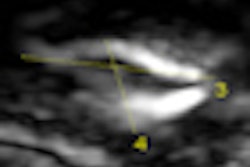Fetal musculoskeletal anomalies have become easier to detect, thanks to technological advancements in 3D and 4D ultrasound equipment and its capability to characterize fetal deformities, according to a recent article in the Journal of Pediatric Orthopaedics.
Because the majority of isolated musculoskeletal anomalies can be treated successfully, parents need to be offered immediate counseling by a pediatric orthopedic surgeon to learn what surgical options will be possible, said authors from Children's Hospital Boston (J Pediatr Orthop, March 2010, Vol. 30:2 Supplement, pp. eS35-S39).
The rate of reported musculoskeletal fetal anomalies is approximately 0.6%, compared to 2% for congenital anomalies. The reported incidence of upper extremity anomalies is one in 1,000 fetuses and may include cleft hands; clasped thumb; bent, overlapping, and/or webbed fingers; extra or missing fingers; and radial dysplasia.
The most common lower extremity anomaly that can be identified in a prenatal ultrasound is clubfoot. An isolated clubfoot may suggest the presence of other fetal abnormalities, according to lead author Dr. Susan Mahan, a pediatric orthopedic surgeon at Children's Hospital, and Dr. James Kasser. Other lower extremity musculoskeletal anomalies include dislocated knees or hips, curly toes, cleft foot, congenital short femur, proximal femoral focal dysplasia, and fibular hemimelia.
Once a musculoskeletal anomaly is identified, the authors recommend that a pediatric orthopedic surgeon be consulted to provide information about the probability of the correct in utero diagnosis, the severity of the expected deformity, treatment options, and the likelihood of a happy and productive life of the unborn child.
They warn that parents-to-be who do not receive an immediate explanation and counseling about the diagnosis may become excessively fearful and form inappropriate opinions about the child's condition, especially with easy access through the Internet to both accurate and inaccurate clinical information.
With timely counseling, parents will be better informed of treatment expectations and will be able to make more knowledgeable decisions with their obstetricians with respect to managing the pregnancy once a musculoskeletal deformity is identified, the authors suggested.
By Cynthia E. Keen
AuntMinnie.com staff writer
April 2, 2010
Related Reading
Does keepsake ultrasound lead to gender abortions in Calif.? March 30, 2010
Cochrane: Doppler US improves high-risk pregnancies, January 20, 2010
Study finds sharp rise in prenatal ultrasound use in Canada, January 7, 2010
Copyright © 2010 AuntMinnie.com



















